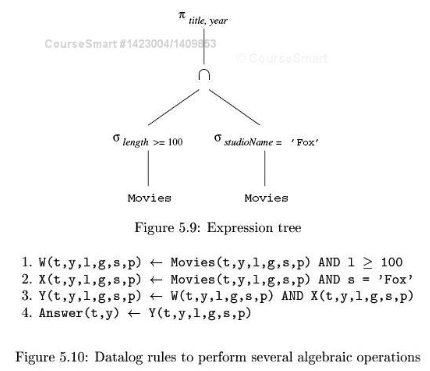About this Chapter
- The focus of this chapter is on programming database applications
- First, we will discuss some important extensions to relational algebra
- This includes some new operators that are very useful in practice, e.g., grouping and sorting
- It also involves some pragmatic compromises that make implementations of relational algebra more efficient
- We will also introduce a different query model that is based on logic
- This formalism is also useful as a foundation towards graphical query languages, e.g., Query-by-Example (QBE)
- And it supports more powerful queries than relational algebra


